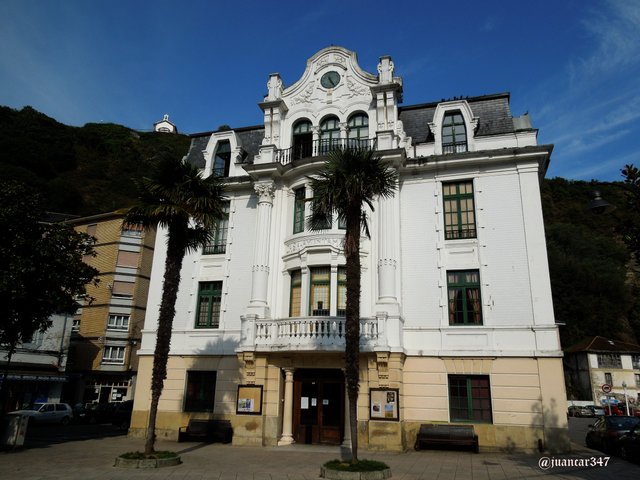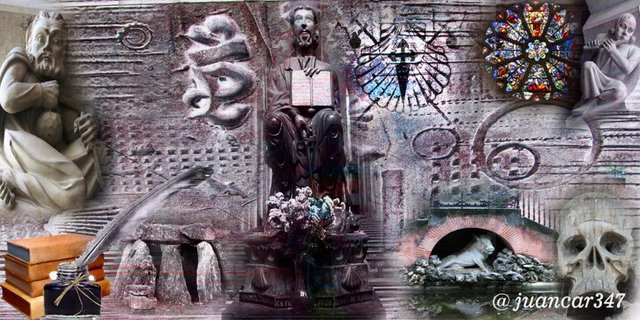Pilgrim in Luarca (Asturias)

Within the North Path that runs along the Asturian coast, there is a small pearl known by all the pilgrims who follow this beautiful path on its way to the West. It is a very special city for me, because not in vain, from its neighborhoods are my paternal roots, and I feel its singular spell from those happy and distant times of childhood, in which I spent long summer seasons.

A few days ago, I had the opportunity-after some time to feel trapped by the poisonous morriña inoculated by that treacherous and treacherous demon Meridiano, who reminded me with longing, perhaps for the second time in a short time in the pages of this pilgrim blog - to return to the Asturian roads and give free rein, among other directions, to that capricious pleasure, to that pleasant existential waste, to make magic with time, no matter what else to remember that happy past, nevertheless with walks and eyes of the present.

With eyes of the present, I will always recommend to start the visit at the top; the one where the vision of the city offers, in the eyes of the visitor, a small garden of sky firmly moored in the earth; where the lighthouse is located, guide talisman of sailors, informer of ventolines, foams and sirens in the black nights without moon; the cemetery, considered one of the most beautiful in the world, with its illustrious inhabitants and white graves, always looking at the sea, with its flowered crosses that resemble elven ships with the sails deployed pointing towards the eternal mists of sunset, towards that place to which the ancient pilgrims were directed, always situated towards the West, towards the stigies of the Finis Terrae; and the most marine and venerated hermitage of the contours: that of the White Virgin and the Nazarene Christ, in whose Main Altarpiece one can admire an authentic work of Art, precious and Romanesque, of the confines, not despicable, of those dark XII centuries -XIII, which represents the Mother of the Mother, or what is the same, a Saint Anne who protects in his lap the Daughter and the Grandson.

I firmly believe that, if we begin our journey in this way, we will be able to understand, with our soul open to poetry, that traditional song, which describes Luarca as a cradle of cradle facing the sea. A sea, which tells one of the versions of the Legend, which came the Holy Ark with the Relics that brought Holy Toribio of Jerusalem, and that, remaining hidden on the top of the Monsacro, are watched and guarded in the cathedral of Oviedo.

A sea, the Bay of Biscay, for which some of those Celtic invaders who brought with them a culture and gods must have arrived, among which is perhaps the most enigmatic of all, but whose name was root and tree of life in the foundation of numerous cities: Lug. Will they be my imaginations, or do I find a certain relationship between both, Arca and Lug, Lugarca? Arca, as the Galician neighbors call the dolmens, but not in vain, it was precisely here, in the North, and there, in the Levant, where the extraordinary Peninsular megalithic culture developed with more intensity.

Many are the hostels of welcome, both tourists and pilgrims, once disappeared, centuries ago, the hospital that the Templars had in the Villa. Some say that it was located in the place occupied today by the church of Santa Eulalia, although it does not even remotely resemble it, its origins go back to the year 912 when it was donated to the church of Oviedo, by King Fruela II.

Others, by contrast, tend to place it at number 10 of the Plaza, where the City Council is located; but if one is entertained to look for this mysterious number ten and see what the now defunct hospital of the militia fratres has become, he will notice, discontented, that the number ten does not exist, so he may suspect that building in whose façade shows the number 9 and 11, like the dragon that ended up devouring it in some unknown historical moment.

Yes, there is, fortunately, that little shop with white walls - not far from the old kiosk of Herminia - whose corner resembles the cabin of a small fishing boat, where they bought me my first float; a float that resembled a seahorse, with which it defied the waves laden with algae that sometimes, angry, Neptuno sent against the beach of Las Salinas and its bathers.

Behind the church, although a bit further up, in the Plaza de la Constitución, there is still a curious shield, of those of indefinite age and cabalistic symbolism, in which a character can be seen with his hands tied behind his back and his Once a rope around his neck, tied to a tree. And I wonder, if perhaps it belongs to one of the most illustrious families of the Council of Valdés: the Villa de Moros.

Valdés, a surname that, coming from England - according to Tirso de Avilés (1) -, had one of its illustrious members as Lord of Beleña. And I ask myself again, if perhaps this place of Beleña is not other than that of Sorbe, located in the mesetaria province of Guadalajara, famous, among other things, for the fantastic agricultural calendar that is shown in its Byzantine church. Although, who knows, perhaps it refers to Beleño, in the Council of Ponga.

There is no doubt that, despite the fact that one has the feeling that nothing has changed in Luarca in these more than thirty years that separate this walker from his memories, in the estuary, despite the presence of an old acquaintance -Juan Salvador Gaviota- missed the presence of trouts and eels, which formerly swarmed in its waters in such quantity, that they could be taken out with handfuls. For the rest, even the Fishermen's Guild appears immutable, with its melancholic memories and the ancestral motto of its brave sailors: Arponeros astures de Luarca, tough race, Lady of the Ocean, tamer of the wind and the wave, rival of the ballenato between the foam...

Notes and bibliography:
(1) Tirso de Avilés: 'Arms and lineages of Asturias and Antiquities of the Principality', GEA, Grupo Editorial Asturiano, reprint of 1999, in commemoration of the IV Centenary of the death of the author (1599).
NOTICE: originally posted on my blog MEMORIES OF A PILGRIM. Both the text and the photographs are my exclusive intellectual property. The original entry, where you can check the authorship of juancar347, can be found at the following address: https://jc347.blogspot.com/2012/09/peregrino-en-luarca.html

designed by: @txatxy
If you want to know something different, stay tuned for the next news of: @tximeleta
.jpg)
[//]:# (!steemitworldmap 43.549299 lat -6.481934 long Pilgrim in Luarca (Asturias) d3scr)

Hiya, just swinging by to let you know that this post made the Honorable Mentions list in our daily Travel Digest. Please drop by to check out all the rest of today's great posts and consider upvoting the Travel Digest if you like what we're doing.
Thank-you very much. Too much honour for me
Congratulations, Your Post Has Been Added To The Steemit Worldmap!
Author link: http://steemitworldmap.com?author=juancar347
Post link: http://steemitworldmap.com?post=pilgrim-in-luarca-asturias
Want to have your post on the map too?
Thanks
Excelente lugar, muy buenas fotografías, @juancar347.
Muchas gracias. Sí que lo es, una de las villas costeras más bonitas de Asturias.
lugar muy hermoso,saludos
Muchas gracias, Mavel. Sí que lo es. Mis raíces están a unos seis kilómetros de allí. Asturias y Luarca las llevo en mis venas. Saludos